Ski: 2025-2026 Salomon QST 94, 180 cm
Test Location: Crested Butte Mountain Resort, CO
Days Skied: ~10
Available Lengths: 156, 164, 172, 180, 188 cm
Blister’s Measured Tip-to-Tail Length (straight-tape pull): 178.7 cm
Stated Weight per Ski (180 cm): 1810 grams
Blister’s Measured Weight per Ski (180 cm): 1862 & 1931 grams
Stated Dimensions: 134-94-120 mm
Blister’s Measured Dimensions: 134-94-120 mm
Stated Sidecut Radius (180 cm): 16.5 meters
Measured Tip & Tail Splay (ski decambered): 63 mm / 31.5 mm
Measured Traditional Camber Underfoot: 2.5 mm
Core Materials: poplar + basalt fibers + titanal binding reinforcement + fiberglass laminate
Base Material: sintered
Factory Recommended Mount Point: -9.6 cm from center / 79.8 cm from tail
Boots Used: Lange Shadow 130 MV, Armada AR One 130
Bindings Used: Salomon Strive 13


Intro
We’ve now covered and tested a whole bunch of new products that will be available during the 2025-2026 season, but this model year seems to be one of fine-tuning and evolution — there aren’t many brands doing full, collection-wide overhauls.
However, Salomon is one of the exceptions. For 25/26, they opted to update their longstanding QST collection of all-mountain and freeride skis.
The revised Salomon QST collection sees changes across the board, and the QST 94 is one of the brand-new models in the series, effectively replacing the prior-generation QST 92 (see our Full Review of that ski).
For the whole backstory and a very in-depth explanation of the changes made to the new QST skis (plus Salomon’s new dual-BOA boots), check out episode 332 of our GEAR:30 podcast.
Since the reveal back in January, we’ve had a bunch of reviewers on all the new QST skis, and we’re kicking off our Full Reviews with the narrowest of the bunch.
What Salomon says about the QST 94:
“QST 94: This piste-forward ski thrives where all-mountain and freeride meet, with a 94mm waist for a versatile mountain experience.”’
—Salomon
History of the QST Series
For about a decade now, Salomon’s QST skis have been quite popular in the all-mountain and freeride categories. But they’ve also undergone lots of updates — some major, others minor — during that time. So, if you want to get caught up on all of that, here’s a quick breakdown:
For reference, Salomon introduced the first generation (we’ll call them “v1”) QST skis in the 2016-2017 season, including the QST 92, QST 99, QST 106, and QST 118. These first-gen skis look fairly similar to the latest models, but they had very different constructions and were the lightest of all the QST iterations, being targeted at both human-powered and lift-accessed skiing.
Salomon then made some moderate tweaks to the skis for the 18/19 season, adding some more flax, carbon, and/or basalt to various models, but we’d still place these versions under the “v1” generation since they were much more similar than different vs. the very first iterations (you could call the 18/19 model year “v1.2”).
Salomon made bigger changes in the 19/20 season, including new shapes and new constructions. In general, these “v2” skis got less tapered, heavier, and more stable in rougher snow conditions. In 21/22, Salomon also cut the QST 118 and (kinda) replaced it with the 112mm-wide QST Blank, which shared a construction similar to the other v2 QST skis.
Then, in the 22/23 season, Salomon revealed the “v3” QST skis. They again updated the shapes and construction of the QST 92, QST 98 (which replaced the prior QST 99), and QST 106. Overall, the skis got a bit more playful and maneuverable, thanks to more notable tapering at the tips and tails and deeper rocker lines throughout. For 23/24, Salomon added new models to the lineup — the lightweight, touring-oriented QST Echo 106 and the lightweight, powder-focused QST X (which is 116 mm underfoot).
And that brings us to the 25/26 “v4” QST skis. As we discussed on our GEAR:30 podcast and our initial write-up on the announcement, this v4 update applies to the 25/26 QST 94, QST 100, QST 106, and S/Lab QST Blank. The S/Lab QST Echo 106 and S/Lab QST X return constructionally unchanged for 25/26.
(For 25/26, Salomon grouped the QST Blank, QST Echo 106, and QST X under their “S/Lab” moniker, which signifies that those three are more specialized tools than the more versatility-focused, non-S/Lab QST models.)
We’ll discuss the specific v4 updates below, but it’s also worth noting that the v4 QST skis are being sold as fully unisex models. In the past, Salomon sold “men’s” and “women’s” versions of most of the QST skis, but they were always constructionally identical — they just came with different graphics and were offered in different available lengths.
For the v4 QST 94, QST 100, and QST 106, Salomon is simply offering two graphic options for each model; the construction and available lengths are identical between each ski’s two graphic options. The 25/26 “S/Lab” skis — the QST Echo 106, QST Blank, and QST X — only come in one graphic / color.
Construction
Compared to the previous QST 92, the QST 94’s construction is pretty similar. It still uses a full poplar wood core, small titanal binding reinforcement plate, and fiberglass laminate.
The QST 94 also uses a version of Salomon’s “Cork Damplifier” inserts at the tips and tails, but the new “Cork Damplifier 2.0” variant consists of a smaller, one-piece insert made of a mix of cork and TPU plastic that borders the perimeter of the wood core at the tips and tails (like a horseshoe).
As with version 1.0, these new cork inserts are still designed to improve the ski’s damping / reduce vibration at the ends of the tips and tails, but Salomon says version 2.0 allows for a more natural flex pattern because it allowed them to extend the wood core farther out toward the ends of the ski.

(The prior QST 92 was an outlier in that it didn’t feature the cork inserts that the wider models did. The v4 QST 94, 100, 106, and Blank all get the version 2.0 cork inserts.)
The prior-gen v3 QST skis had Salomon’s “C/FX” layer of carbon and flax; the v4 QST skis ditch that but add a layer of basalt fibers. Salomon says that they opted to use basalt to primarily increase torsional stiffness (with minimal weight gain), whereas the C/FX layer was primarily designed to add stiffness, rebound, and vibration damping.
Shape & Rocker Profile
Compared to the QST 92, one of the most obvious differences with the new QST 94 is its shape. The QST 92 had notably tapered tips and tails, relative to other skis around the same width. The QST 94 still features a bit of early tapering at the tips and tails, but its effective edge is definitely longer than the ski it replaces, largely due to its less tapered, more squared-off tail.
The rocker profile is a different story. Like the prior QST 92, the new 94 still features camber underfoot paired with notably deep tip and tail rocker lines, relative to other ~95mm-wide skis. However, the QST 94 actually has deeper rocker lines and more splay / rocker height than the 92, especially through the tail (I’d call the QST 94’s tail at least “semi-twinned”). Of directional skis around this width, the QST 94 is one of the most rockered we’ve seen.
Flex Pattern
Here’s how we’d characterize the flex pattern of the QST 94:
Tips: 6.5-7
Shovels: 7
In Front of Toe Piece: 7.5-10
Underfoot: 10
Behind the Heel Piece: 10-8.5
Tails: 8-7
Overall, this is a pretty accessible / forgiving flex pattern. The area around the bindings is stiff, but the ski softens significantly as you move toward the ends of the tips and tails. And, while the back half is stiffer than the front, that difference isn’t dramatic (i.e., the flex pattern feels fairly ‘round’ / fairly symmetrical).
Compared to the prior-gen QST 92, the QST 94’s flex pattern feels very similar overall; the new QST 94 feels a tad softer overall, most notably around the shovels.
Sidecut Radius
Salomon says the 180 cm QST 94’s sidecut radius is 16.5 meters, which is on the tighter / shorter end of the spectrum for its class.
Mount Point
The QST 94’s deep rocker lines and accessible flex pattern suggest a playful ride, but it has a traditional, set-back recommended mount point of about -10 cm from true center.
Weight (and Comparisons)
Our 180 cm QST 94 weighs about 1900 grams per ski. That’s very close to the weight of the v3 QST 92, and it puts the QST 94 on the lighter end of the weight spectrum for its class.
For reference, below are some of our measured weights (per ski in grams) for some notable skis. As always, keep in mind the length and width differences to try to keep things more apples-to-apples.
1731 & 1750 Liberty Radian 100, 179 cm
1735 & 1741 Elan Ripstick 96, 182 cm
1762 & 1769 Dynastar M-Pro 94 Ti, 178 cm
1776 & 1817 Elan Ripstick 102 Black Edition, 182 cm
1800 & 1824 Romp Zorro 100, 183 cm
1804 & 1819 ON3P Woodsman 92, 181 cm
1808 & 1823 Shaggy’s Ahmeek 95, 180 cm
1821 & 1838 Stöckli Stormrider 95, 182 cm
1824 & 1835 Black Crows Serpo, 180.1 cm
1830 & 1860 ZAG Slap 98, 180 cm
1831 & 1844 K2 Mindbender 96C, 178 cm
1851 & 1868 Folsom Completo 100, 186 cm
1862 & 1931 Salomon QST 94, 180 cm
1869 & 1873 Line Sakana, 181 cm
1880 & 1887 Blizzard Rustler 9, 180 cm
1883 & 1906 Season Aero, 180 cm
1886 & 1925 Atomic Bent 100, 186 cm
1893 & 1897 Salomon QST 92, 184 cm (v3)
1893 & 1925 Icelantic Nomad 100, 188 cm
1894 & 1919 RMU Apostle 96 Ti, 184 cm
1901 & 1902 Renoun Endurance 98, 184 cm
1901 & 1905 Scott SEA 98, 180 cm
1916 & 1963 DPS Carbon Wailer 100, 184 cm
1917 & 1961 DPS Carbon Wailer 90, 184 cm
1925 & 1934 Black Crows Camox, 186 cm
1935 & 1962 Fischer Ranger 96, 180 cm
1944 & 1995 Salomon QST 100, 180 cm
1945 & 1946 Ellis Sabr 100, 186 cm
1946 & 1968 Salomon Stance 96, 182 cm
1947 & 1962 Meier Wrangler, 185 cm
1951 & 2003 Dynastar M-Free 100, 185 cm
1952 & 1964 Folsom Cash 93, 185 cm
1976 & 2000 Line Pandora 99, 184 cm
1980 & 1981 ZAG Mata Ti, 178 cm
1981 & 1991 Faction Dancer 2, 182 cm
1988 & 2067 Rossignol Arcade 94, 178 cm
1999 & 2060 Line Blade, 181 cm
2024 & 2035 Nordica Enforcer 94, 179 cm
2053 & 2059 J Skis Fastforward, 181 cm
2054 & 2063 Salomon QST 98, 189 cm (v3)
2074 & 2076 Völkl M7 Mantra, 177 cm
2077 & 2096 Line Optic 96, 184 cm
2097 & 2098 Rossignol Sender Soul 102, 180 cm
2103 & 2255 Salomon QST 106, 189 cm
2138 & 2163 Blizzard Anomaly 94, 182 cm
For the 2024-2025 season, we’ve partnered with Carv to use their Carv 2 sensors and digital ski coach app to not only learn more about our own skiing technique, but also add more useful info to our ski reviews. Here, you’ll see us reference some of the data that the Carv 2 sensors record and analyze while we’re skiing. Check out our announcement to learn more about how Carv works, why we’re excited to use it as a tool for our reviews, and how to get a discount on your own Carv setup.
FULL REVIEW
Over the past few months, we’ve been spending time on all the new Salomon QST skis and discussing them in our various Flash Reviews and podcasts. For most of us, this started back at Blister Summit 2025, where we and lots of Summit attendees first got on them. Afterward, we continued to log laps on the QST 94 in just about every condition we can encounter here in Crested Butte.
Now, let’s get into what this ski does best, where it falls short, and whether you might want to consider it.
Groomers / On-Piste Performance
Luke Koppa (5’8”, 155 lbs / 173 cm, 70 kg): When I first saw the QST 94, my hunch was that Salomon had decided to make it more precise and generally better on piste than the ski it replaces, the QST 92. And while there’s some truth to that hypothesis, there’s much more to the story.
Compared to the QST 92, the QST 94 does feature a longer effective edge, thanks to the QST 94’s less tapered tips and tails. However, within the current crop of ~95mm-wide all-mountain skis, the QST 94 still has deeper rocker lines than most — this is a far cry from a dedicated piste ski.
On firm groomers, this makes the QST 94 less precise and engaging than many other skis around the same width, but it is a better carver overall than its predecessor.
Looking at my Carv data, it aligns well with what I experienced on snow. My general takeaway is that this ski is very intuitive and predictable on piste — and it can be exciting in certain conditions — but I wouldn’t say that it excels on groomed snow.
For each run, Carv gives you an overall score for how you skied, which they call “Ski:IQ.” When I’m skiing really well on a pretty piste-focused ski, I can usually get scores in the 155-165 range; on the QST 94, I rarely broke into the 150’s. I also didn’t tend to log high G-force numbers on the QST 94 (average was about 1-1.5 G’s), and my edge angles tended to average out around a fairly modest 40–50°.
Now, I still really enjoy carving this ski, especially on softer groomers. I wouldn’t call it boring, and I definitely wouldn’t call it demanding. But the QST 94 doesn’t match the turn initiation, edge hold, and energy of a much less rockered ski like, say, the Volkl M7 Mantra. If you want your all-mountain ski to carve like your much narrower piste skis, the QST 94 isn’t for you.
Despite not getting much feedback from the QST 94’s shovels when initiating a turn, it’s still capable of pretty tight ones. The 180 cm’s stated sidecut radius is 16.5 meters, and when I was pushing it fairly hard, Carv says my turn sizes averaged between roughly 15-17 meters — what I’d call medium-small turns. But when I lengthened my turns and kept to less aggressive edge angles at high speeds, I didn’t experience any weird ‘hooky’ sensation on the QST 94.
Overall, the QST 94 isn’t what I’d pick if on-piste performance is a big priority for you, especially if you’ll spend a lot of time on really firm slopes — a less rockered and less tapered ski is better suited to that (e.g., Salomon’s Stance series). But on fresh corduroy or runs that have been warmed a bit by the sun, I really enjoy making fairly tight carves on the QST 94. And it doesn’t require that I drive it hard, get it on a particularly steep slope, or stay on my A-game all the time in order for it to feel intuitive.
Moguls, Trees, & Tight Terrain
While I didn’t get high marks from Carv while skiing the QST 94 on piste, I did get some of my highest scores of the season when I took it into moguls and other tight, off-piste terrain. This ski is a blast there.
The QST 94 has a lot going for it when it comes to tighter terrain. Its swing weight feels pretty light, its tails are very easy to release and skid around, and it’s generally quite forgiving.
In addition to it not requiring lots of physical effort to flick around, a big part of why I get along so well with the QST 94 in bumps and trees is this ski’s flex pattern. For me and my preferences, it provides a pretty ideal blend of support and accessibility that encourages me to increase my pace and take some more chances. I never found myself wishing for more support from the shovels or tails, but the QST 94 also made it easy to recover when I inevitably got knocked backseat or otherwise ended up in a less ideal body position.
Overall, the QST 94 works best when you’re skiing with a fairly forward stance, driving its shovels a bit to unweight and free up its tails. However, it still feels very intuitive if you ski it with a more upright, centered stance, especially in more broadly spaced bump lines. And I can get away with some pretty sloppy backseat skiing on the QST 94 without feeling like it’s gonna send me into a tree the moment I slip up.
All of this makes the QST 94 easy to recommend to folks who want a nimble, maneuverable, and forgiving ski in tight, off-piste terrain. Especially compared to most skis around the same width, the QST 94 stands out for its off-piste maneuverability and forgiveness. At the same time, the QST 94’s middle-of-the-road weight and not-absurdly-soft flex pattern can make it a ton of fun to ski aggressively in this sort of terrain.
Compared to the QST 92 it replaces, the QST 94 feels quite similar in tight terrain. The QST 92’s swing weight was a bit lower and its tail felt a bit looser / surfier, but those are pretty minor differences, and I think the QST 94’s flex pattern is actually more forgiving in moguls.
Directional skiers coming from much heavier and/or less rockered skis may find the QST 94 too forgiving or loose / imprecise, and its directional mount point (about -10 cm from true center) means that it’s not your best bet if you prefer to ski very centered all the time. But I think the majority of skiers out there would get along pretty well with this ski in bumps, trees, and the like.
Powder & Soft Chop
The QST 94 handles fresh snow really well for its width. Its deep tip rocker line and set-back mount point help it float better than the vast majority of skis around the same width, and the QST 94’s surfy / loose ride that I just covered carries over to soft snow, too.
The QST 94 might not be quite as easy to slash around in deep snow as the prior QST 92, but the new 94 floats better and gets knocked around a bit less in dense chop. The QST 94 isn’t all that stable in chop in the grand scheme of comparable all-mountain skis, but it excels when you ski with a more dynamic style — lots of slashes, airs, and other little last-second adjustments (rather than charging down the fall line).
Overall, this is one of the best <95mm-wide skis I’ve tried when it comes to powder and deep chop. That said, if you plan on skiing a lot of that, you might want to just bump up to the QST 100 or QST 106; those wider, more rockered, and more tapered skis offer even better flotation and maneuverability in these conditions. But, as a 1-ski quiver or a versatile all-mountain setup narrower than 100 mm underfoot, the QST 94 outperforms most of its competition when the snow is soft.
Firm Chop & Crud
As you might have guessed by now, the QST 94 is not a super damp or stable ski. I think it’s perfectly respectable in those regards, once you take into account how agile, maneuverable, and forgiving it is, but this is not the ski to get if you want to ski really fast in rough, cruddy conditions.
On one hand, I think the QST 94’s suspension is very good, relative to its weight (about 1900 grams per ski @ 180 cm). Despite its low swing weight, the QST 94 does a good job of muting out / absorbing smaller vibrations and impacts from the snow, and I think it’s a bit better than the previous QST 92 in this regard.
On the other hand, the QST 94’s shape, rocker profile, and flex pattern don’t do it tons of favors when hitting variable snow at high speeds. The QST 94 does feel more composed in these scenarios than the QST 92, but the QST 94 still stands out much more for its maneuverability than its high-speed stability.
So, rather than making big turns when the snow is nasty, the QST 94 prefers to take it easier, mixing in plenty of short skidded or carved turns to keep your speed in check as you (hopefully) head toward some more favorable snow.
Playfulness & Mount Point
I was surprised when I saw the recommended mount point of the QST 94. At about -10 cm from true center, it’s a pretty traditional / directional mount point, but the QST 94 feels a lot more playful than that single figure might suggest.
As I mentioned above, the QST 94 will let you ski it pretty centered (apart from really tight moguls). It also stands out for many of the traits that go into overall ‘playfulness’ — it has a low swing weight, a forgiving flex pattern, a loose / surfy ride, and it produces an appreciable amount of energy when you bend it.
So, compared to most ~95mm-wide all-mountain skis, the QST 94 is very playful overall. That said, this isn’t a freestyle ski. Its set-back mount point and fairly directional shape mean that it doesn’t feel particularly balanced.
It’s got enough tail splay to ski switch in most conditions, and if you don’t mind a more directional mount point, the QST 94 still encourages plenty of air time. But a more symmetrical ski (e.g., Salomon’s Depart) is likely a better call if you plan on spending a lot of time lapping the park or spinning off natural features.
For reference, I’d consider my skiing style very playful, but not very freestyle-focused (lots of straight airs, very few spins over 360°). With that in mind, my favorite skis tend to allow for both a forward and centered stance, with recommended mount points in the -8 to -4 cm range. On its recommended mount point, the QST 94 catered to a wide range of stances and didn’t feel particularly unwieldy in the air, so I never felt the need to move the bindings forward from recommended. (If you told me to guess before seeing its specs, I would’ve bet that this ski’s mount point was between -8 and -6 cm from true center.)
Who’s It For?
The QST 94 could work for a whole bunch of skiers. The main thing that makes this ski stand out is how agile, maneuverable, and forgiving it feels off piste, so that’s what I’d focus on if you’re debating whether it’s a good fit for you.
With that in mind, it’s a great option for beginner and intermediate skiers looking to spend more time away from groomed slopes. But the QST 94 can also be a ton of fun under the feet of more experienced and aggressive skiers, provided that they’re looking to ski with a more playful and dynamic style, rather than making the fewest, fastest turns possible.
This also makes it a great ski for less experienced folks to ‘grow into.’ The QST 94 is not demanding and is happy to take it easy, but it also has a pretty high ceiling of performance — provided that you’re realistic about your expectations and where this ski does and does not shine (i.e., it’s not gonna slice railroad tracks into ice, nor is it super stable when making big, fast turns).
As a do-everything all-mountain ski, the QST 94 is a worthy contender if you prioritize off-piste maneuverability (at least slightly) more than on-piste precision. The QST 94 is still lots of fun on softer, more easily edge-able trails, but there are plenty of other ~95mm-wide skis that provide more precise turn initiation and edge hold when the groomers are very firm (e.g., Salomon’s Stance collection).
Bottom Line
The new Salomon QST 94 is a bit of an outlier in its class, but the end result is a ski that lots of folks could love.
Don’t get it if you want to make powerful carves on really firm groomers or giant turns through cruddy snow. But you should definitely put it on your list if you’re in the market for a nimble and maneuverable all-mountain setup that excels in tight terrain and mixed snow conditions.
Our Deep Dives, Winter Buyer’s Guide, & Flash Reviews
BLISTER+ members and those who purchase our Digital Access Pass can check out the Deep Dive comparisons linked below, where we compare a given ski, bike, etc. to a whole bunch of other comparable products in its class. Don’t have access? Get our Digital Access Pass to read all of our Deep Dive comparisons, as well as our Flash Reviews, where we provide our initial impressions as soon as we start testing gear.
Or, even better, become a BLISTER+ member to get that + the best worldwide Outdoor Injury Insurance, exclusive deals and discounts on skis, personalized gear recommendations from us, access to our annual Winter Buyer’s Guide, and much more.
On that note, you can also get our thoughts on this ski and 300+ others in our 2024-2025 Blister Winter Buyer’s Guide. BLISTER+ members already have access, or you can purchase the guide on its own to get the the print copy + digital version at no extra cost, or the digital-only edition.

2024-2025 Blister Digital Winter Buyer’s Guide
350+ skis, 65 boots, and 280+ pages of honest, accurate product reviews and comparisons. Order our 24/25 Winter Buyer’s Guide or become a BLISTER+ member to read the Digital Guide NOW.
If you’re already a Blister Member or have purchased the 24/25 Winter Buyer’s Guide and are seeing this message, please log in and then refresh this page.

Deep Dive: Salomon QST 94
We compare the Salomon QST 94 to the Salomon QST 92, Salomon QST 100, Salomon QST 98, Salomon Stance 96, Black Crows Serpo, Dynastar M-Pro 94 Ti, Stöckli Stormrider 95, Elan Ripstick 96, RMU Apostle 96 Ti, Line Optic 96, Black Crows Camox, Meier Wrangler, Shaggy’s Ahmeek 95, Renoun Endurance 98, Blizzard Rustler 9, ZAG Slap 98, J Skis Masterblaster, J Skis Fastforward, Folsom Completo 100, Icelantic Nomad 100, DPS Wailer 100, Rossignol Sender Soul 102, K2 Mindbender 96C, and K2 Mindbender 99Ti.
Blister’s Flash Reviews and Deep Dives are accessible to those who purchase one of our paid subscriptions
To get our comprehensive Deep Dives and our initial, unfiltered reports on new gear, become a member and receive many other services, deals, and discounts.
If you’re already an active member, please log in.
(If you’re already logged in and a member in good standing and seeing this message in error, please refresh this page in your browser.)
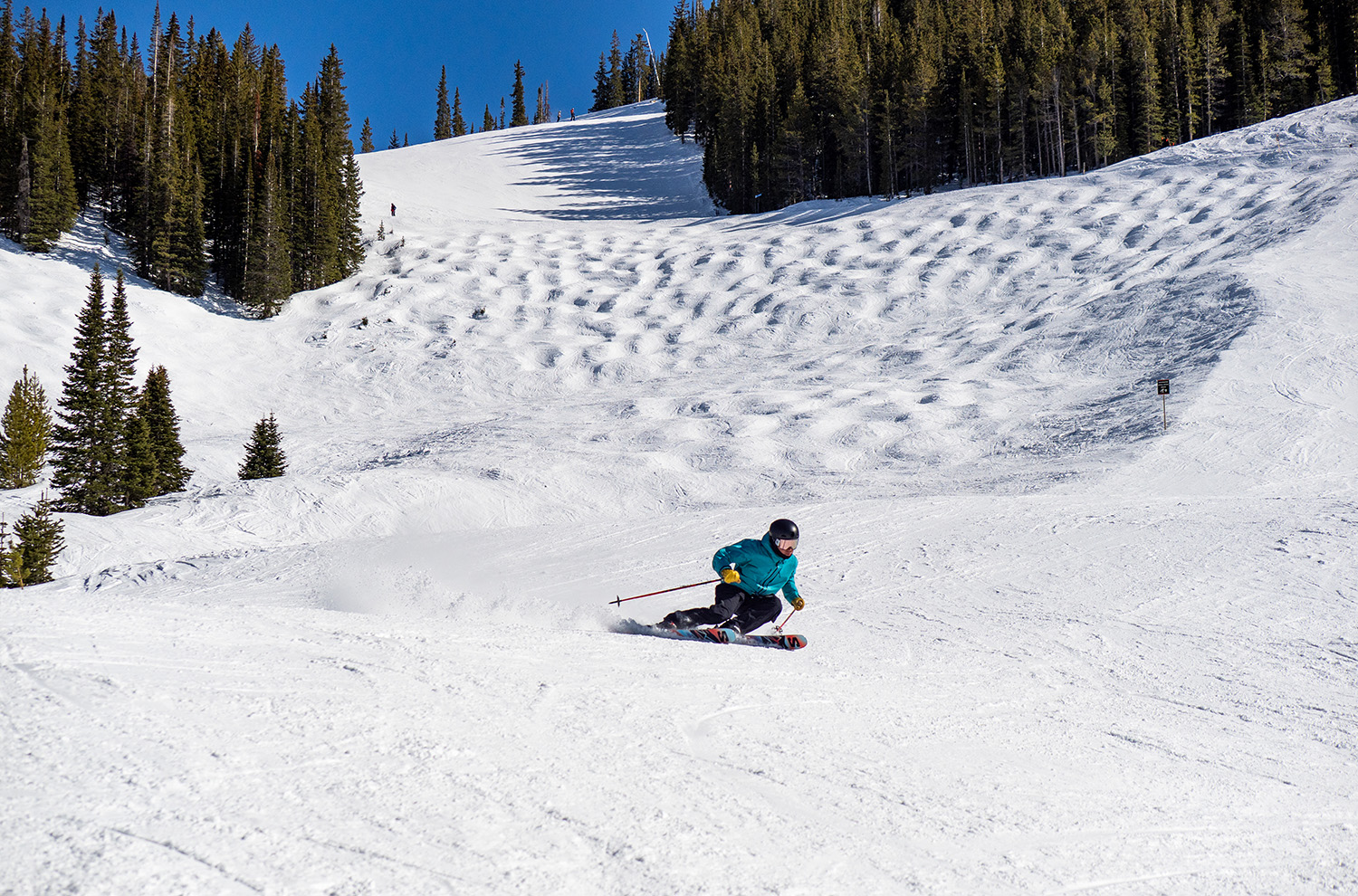
Flash Review: 25/26 Salomon QST 94
Salomon’s new QST 94 is the narrowest addition to their new QST lineup of skis, replacing the popular QST 92. Here are our initial impressions on the QST 94, including how it compares to the outgoing model.
Blister’s Flash Reviews and Deep Dives are accessible to those who purchase one of our paid subscriptions
To get our comprehensive Deep Dives and our initial, unfiltered reports on new gear, become a member and receive many other services, deals, and discounts.
If you’re already an active member, please log in.
(If you’re already logged in and a member in good standing and seeing this message in error, please refresh this page in your browser.)

Flash Review: 25/26 Salomon QST 100
We’ve started our long-term testing of Salomon’s updated QST series, and recently spent several days on the all-new QST 100. Here are our initial impressions.
Blister’s Flash Reviews and Deep Dives are accessible to those who purchase one of our paid subscriptions
To get our comprehensive Deep Dives and our initial, unfiltered reports on new gear, become a member and receive many other services, deals, and discounts.
If you’re already an active member, please log in.
(If you’re already logged in and a member in good standing and seeing this message in error, please refresh this page in your browser.)
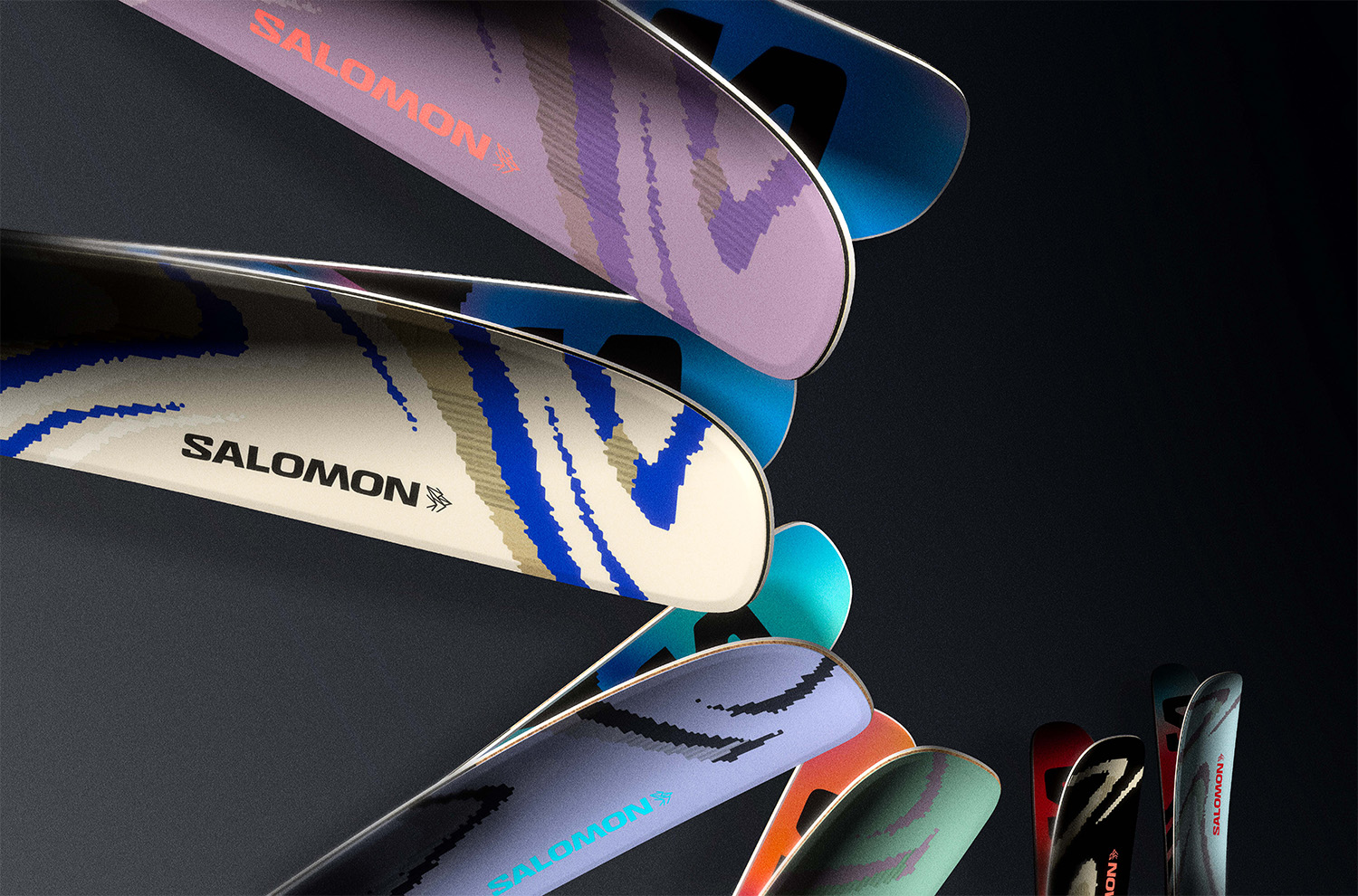
Salomon Announces New 2025-2026 QST Ski Collection
Salomon is overhauling their popular line of freeride skis, including two brand-new models, updates to the returning skis, and more. Here are the details.
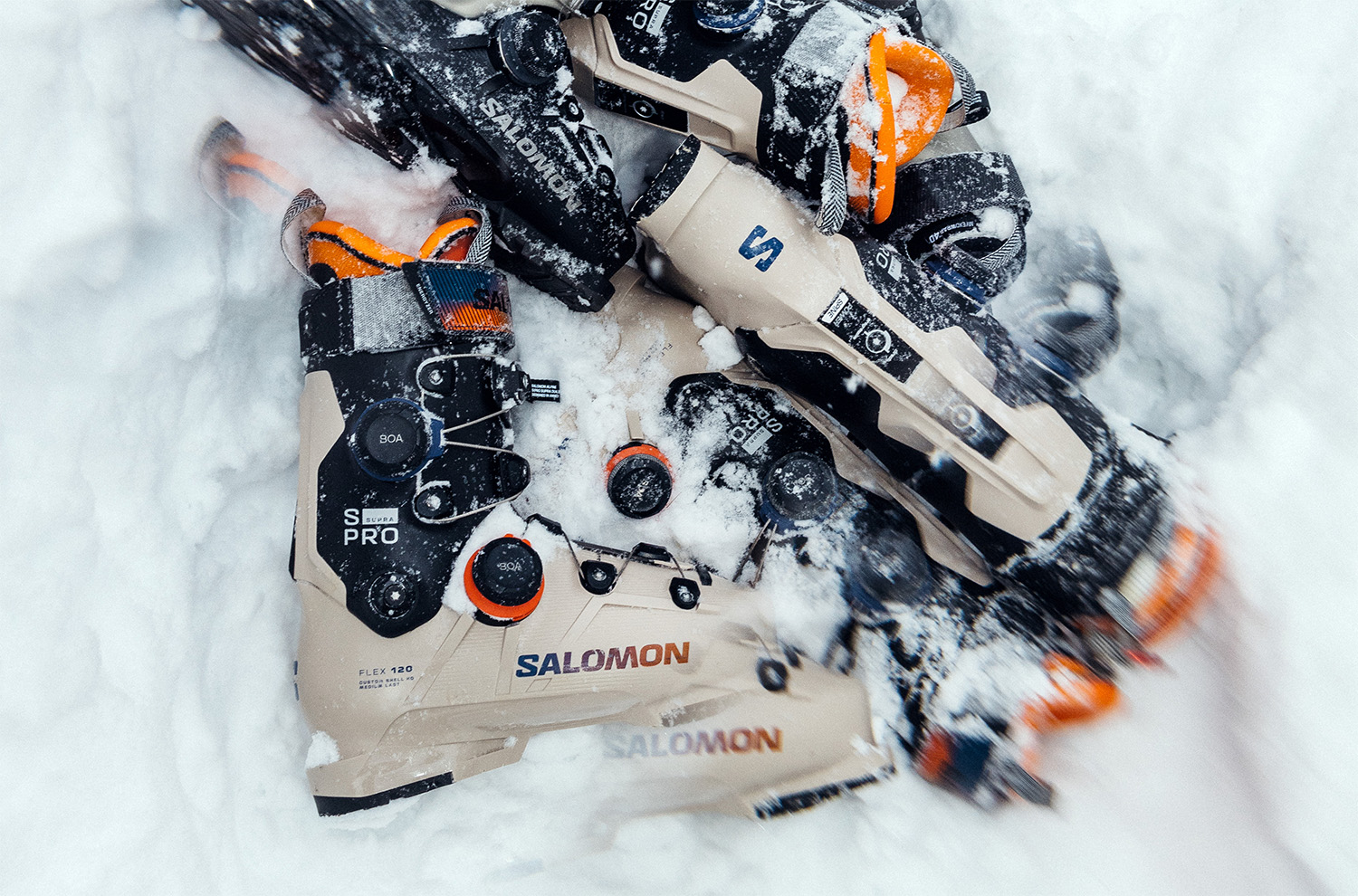
New Salomon Dual BOA Ski Boot & New Salomon QST Skis (Ep.332)
We talk about the biggest development in the world of snowsports gear: dual BOA ski boots. You’ll learn about dual BOA boots in general, but also the specific design decisions Salomon made to implement this system into their new S/Pro Supra dual BOA ski boot. Then we talk with Quentin Boutry about the new generation of QST skis.




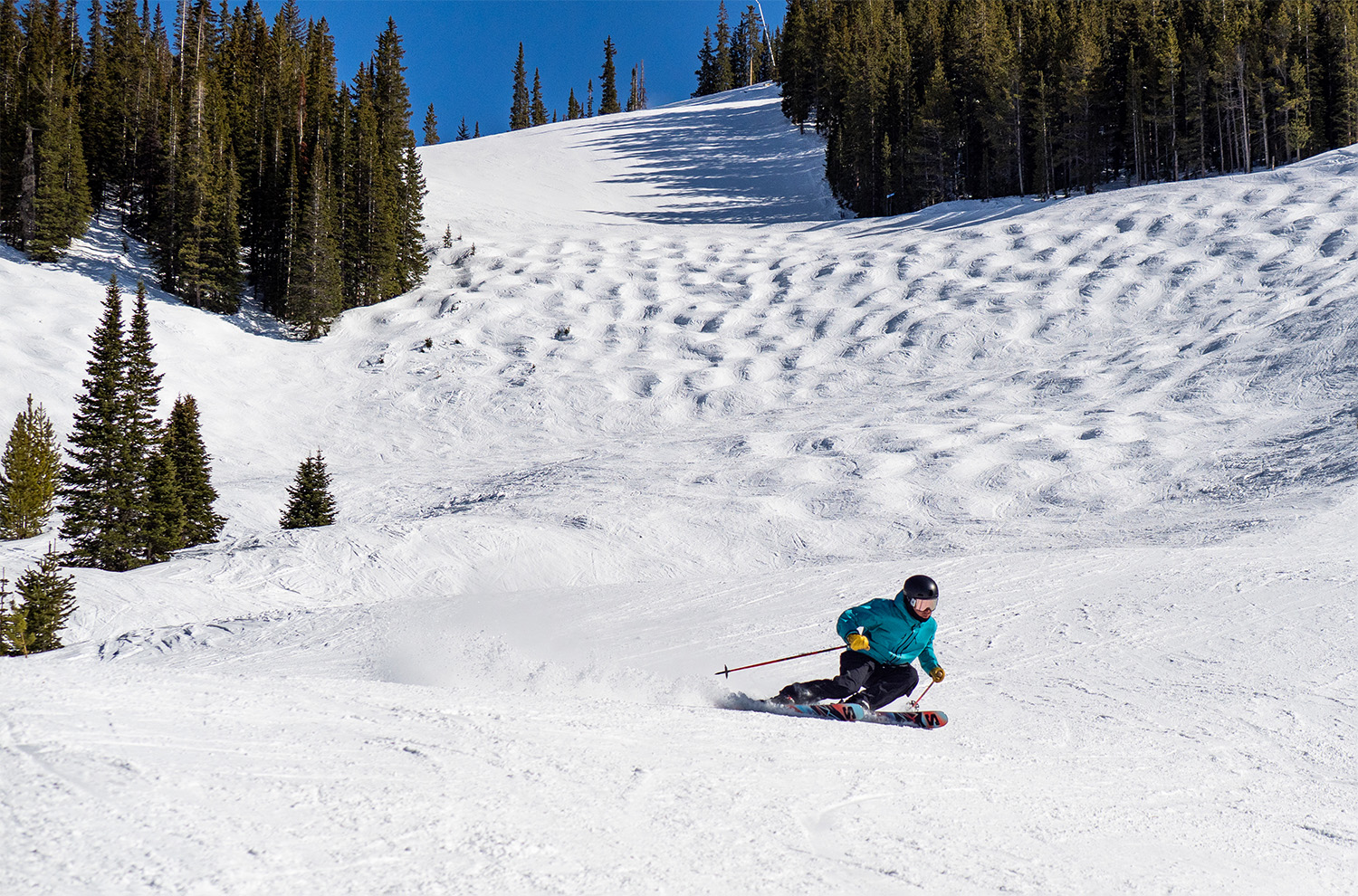
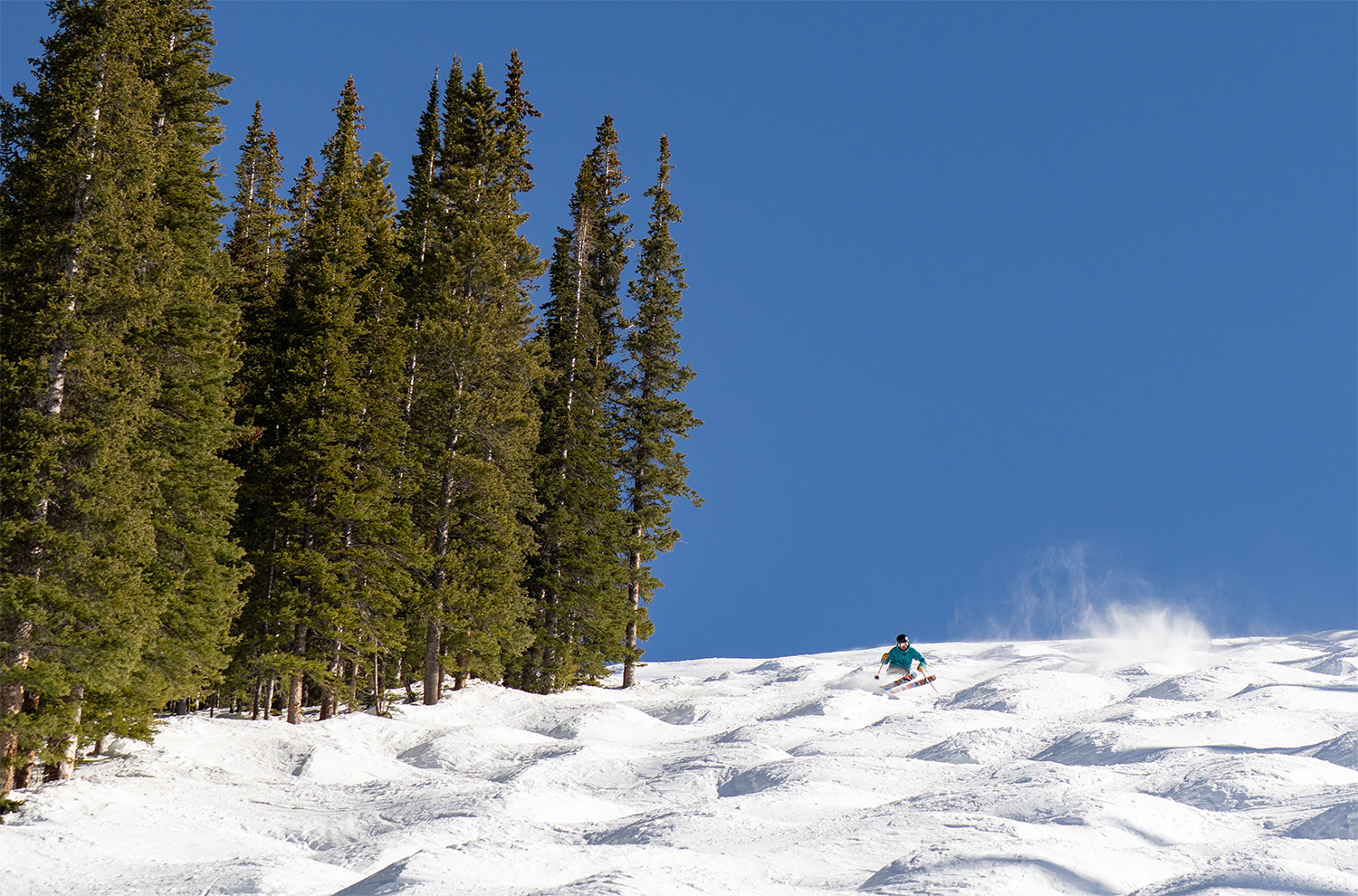
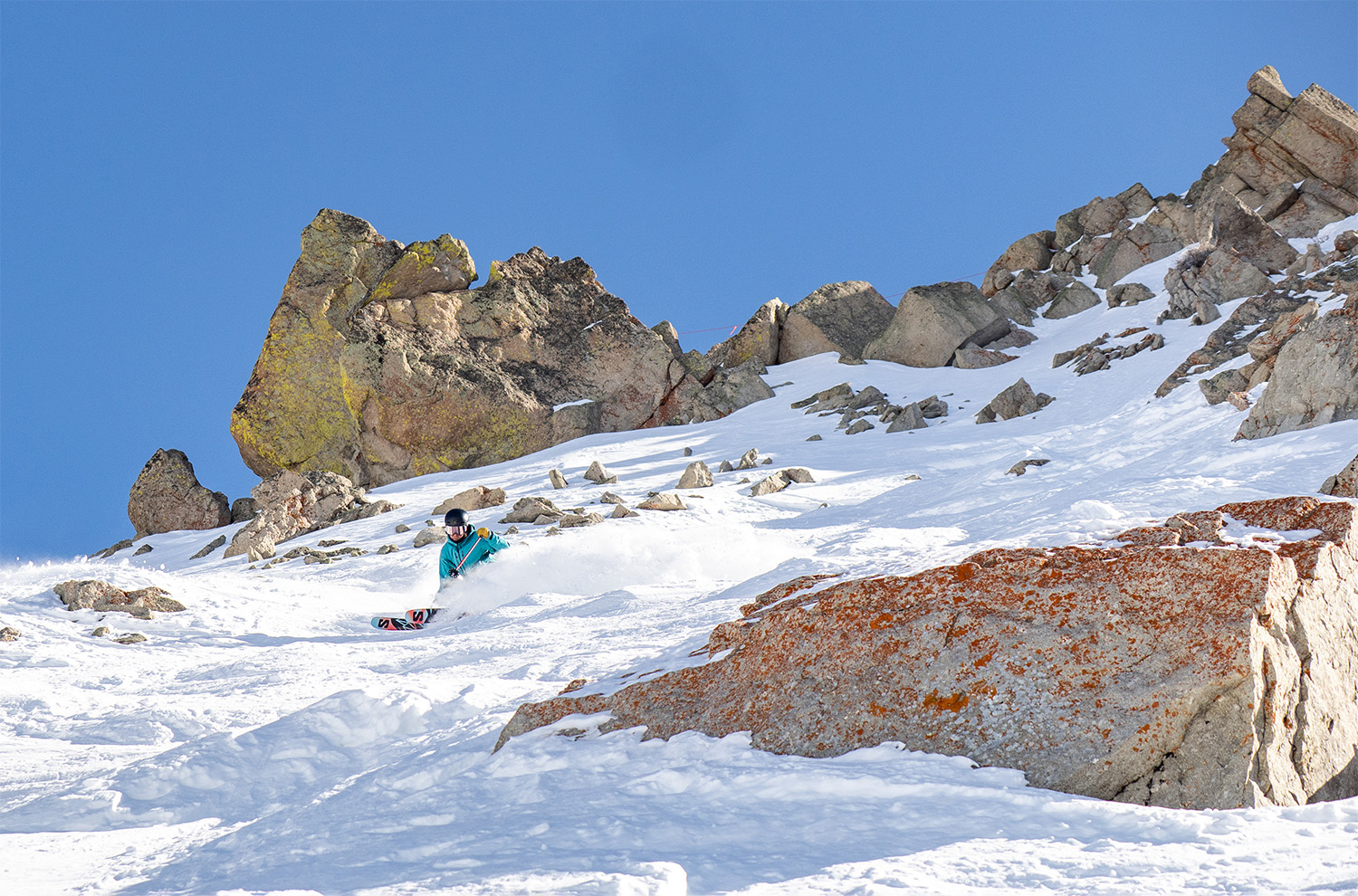

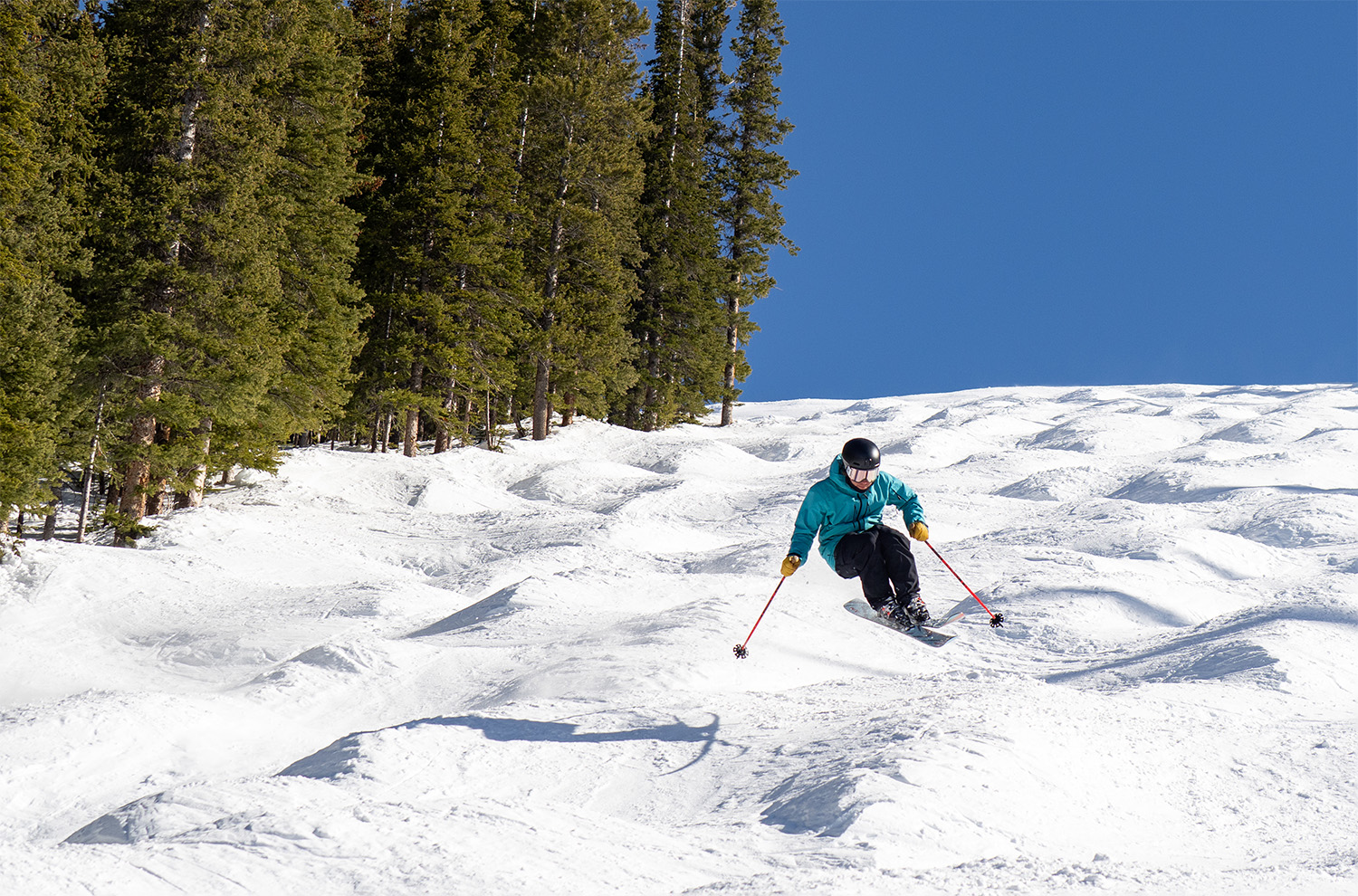

Sounds like a good tele ski. ;)
Hi. Excellent review as always!
I am a 5’11” 160lbs, advanced skier in Europe looking for a mid 90s ski sit in between my Stockli Laser ARs and my QST 106s.
I know this is extremely personal, but considering the (slight) difference in performance between the QST 94s and last year´s 92s that you mention, would you wait for 94s or would you go for the 92s at a considerably discounted price? Also in terms of length, would recommend 172 or 180 for the 94s?